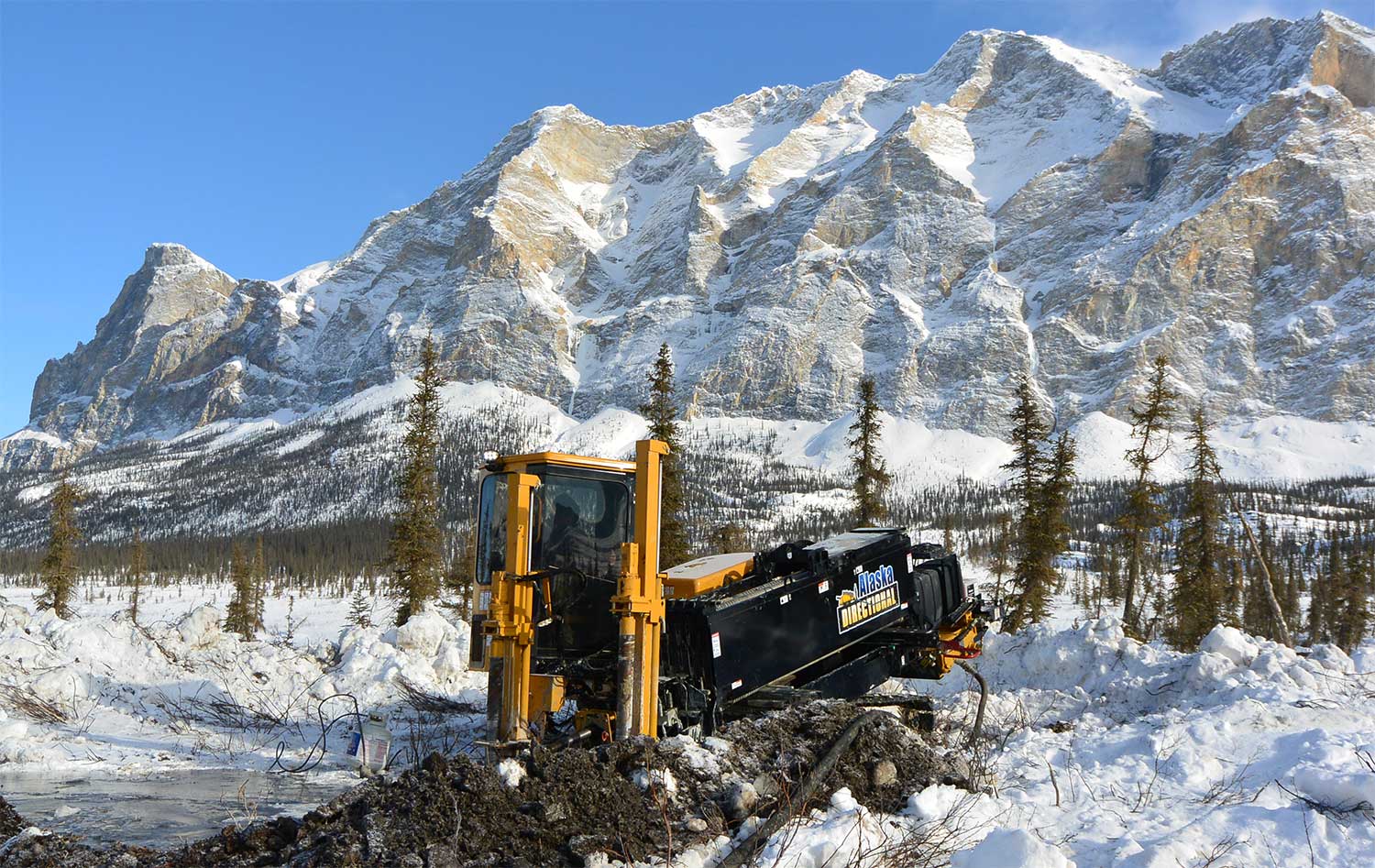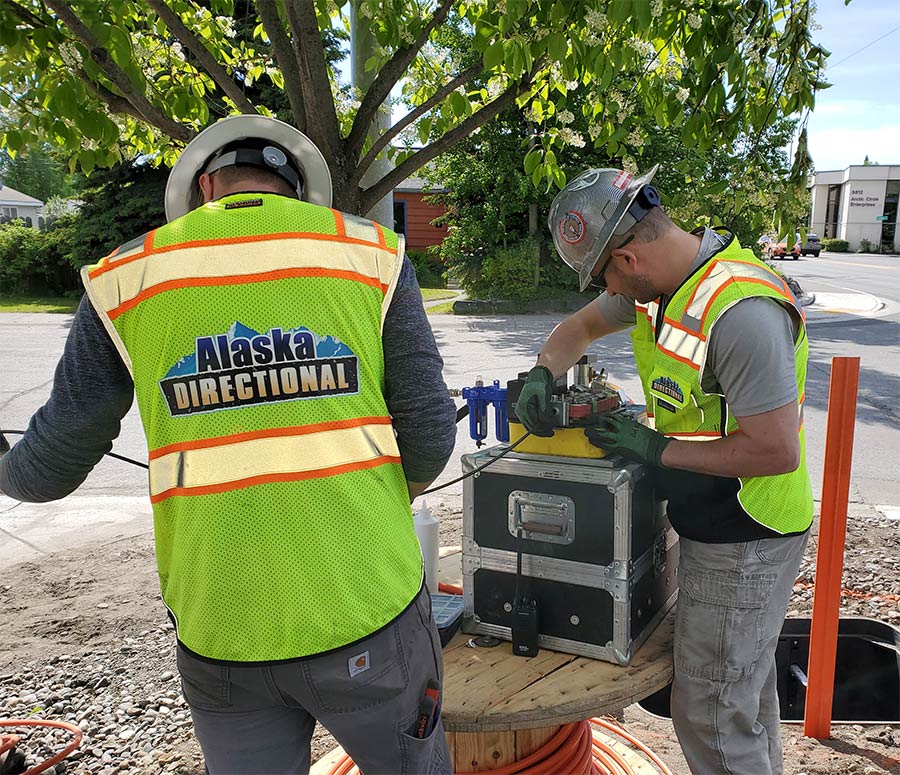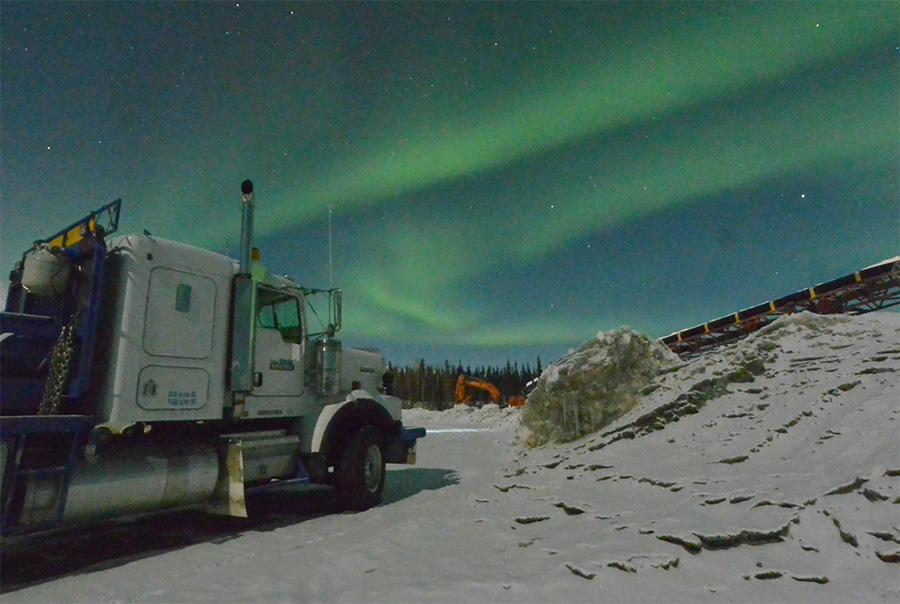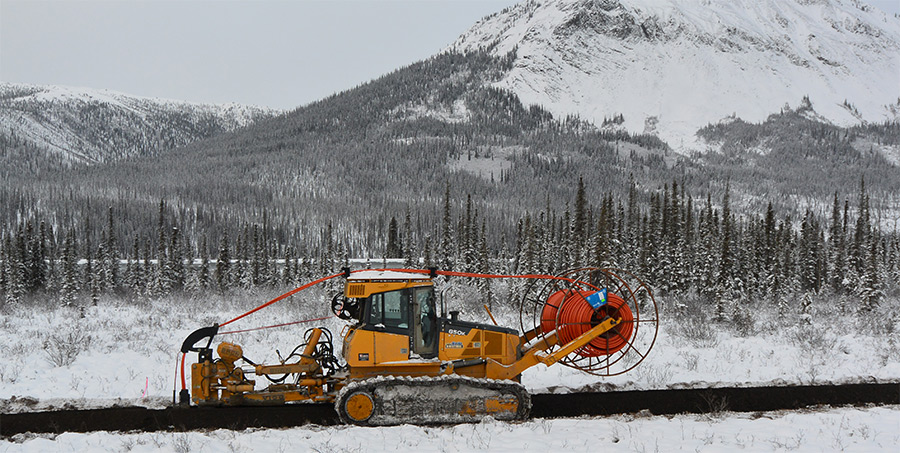
Alaska Directional


Alaska Directional machinery works in Atigun Pass to help bring high-speed internet access north. The Palmer-based company has installed more than 500 miles of fiber-optic cable in the last five years.
On the Line
Palmer-based Alaska Directional sets records by prioritizing people
By Kevin Klott
here’s a race happening in Alaska to upgrade its internet capabilities and Alaska Directional, LLC is working fast and efficiently to be the leader.
During the past five years, the Palmer-based company has laid more than 500 miles of fiber-optic cable throughout the Last Frontier. David Tucker, a general foreman at Alaska Directional, says 288 of those miles occurred in a single year.
“We pride ourselves on taking on the Herculean tasks and accomplishing them on—or ahead of—schedule,” says Tucker. “In the Alaska construction season, efficiency is absolutely critical. Efficiency allows us to utilize the weather and changing seasons to our advantage to bring projects to completion.”
An example of a Herculean project was Alaska Directional laying cable for the 300-mile fiber-optic cable network called AlCan ONE, which stretches from the Canadian border to North Pole. Work began in the spring of 2019. When it ended in the spring of 2020, it became the first terrestrial fiber to connect Alaska with the rest of the United States and the largest long-haul fiber project completed in one year in state history, according to Tucker.
“This project was an outstanding example of efficiency and safety, as well as environmental diligence and awareness,” says Tucker.
Alaska Directional categorizes its work into four buckets: horizontal drilling services, telecommunications line work, splicing, and remote utility support. CEO Brad Lindstrom says Alaska Directional offers everything in house.
“We have one of the largest fleets in the state,” says Lindstrom.
The company was started by William “Billy” Long with just one horizontal drill. With help from a network of fellow union members, Long was able to expand the company to one of the foremost telecommunications contracting companies in the state.
Alaska Directional currently has sixty-five employees and uses union labor from the International Brotherhood of Electrical Workers, or IBEW, Local 1547, which allows the company to scale up on demand. Tucker says the company will most likely have more than ninety employees by the start of the construction season.
With this growth and the ability to take on larger and larger work, Bristol Bay Industrial, a subsidiary of Bristol Bay Native Corporation, took notice and acquired the company.

Above: An Alaska Directional crew installs fiber-optic cable in Anchorage.
Top right: An Alaska Directional vehicle parked underneath an aurora borealis display along the Haul Road.
Right: An Alaska Directional machine works to prepare the installation of fiber-optic cable along the Richardson Highway near Delta Junction.


“Our linemen, drillers, splicers, and office team work to maximize our potential,” says Tucker. “Working closely with our Local 1547 has allowed us to maintain a level of excellence and morale in our team that is second to none. From the CEO to the apprentices, there is an open line of communication to develop and grow personnel.”
Alaska Directional’s goal is to be a one-stop-shop for telecommunications, Tucker says. Whether it’s aerial, underground, or drilling, the company specializes in telecom work. But it also drills for all types of utilities: gas, power, sewer, and drainages. Its drilling side works with utilities while the telecommunications side does the linework.
In 2016, Alaska Directional completed 125 miles of line work from Coldfoot to Slope Mountain for New Horizons Telecom, Inc. and Quintillion Networks. The work included drilling and reclamation.
“This project was an extremely challenging one due to the extremity of climate and remoteness,” says Tucker. “Difficult ground would be an understatement.”
Despite its challenges, Alaska Directional completed the work on time and worked with other contractors who were behind schedule to bring the project online by the deadline.
Alaska Directional has recently taken on other projects in Cordova, Healy, Coldfoot, and Kotzebue. In Cordova, there were two goals: bring faster internet capabilities to homes and businesses in Cordova and Yakutat.
“Alaska Directional is a great construction partner that has helped Cordova Telecom build out fiber-to-the-home for our community,” says Jeremiah Beckett, CEO of Cordova Telecom Cooperative. “Alaska Directional has consistently completed projects on time and within budget to help Cordova Telecom reach our local construction goals.”
To get high-speed internet to Yakutat, Alaska Directional plowed down 13 miles of duct along the Copper River Highway. This summer, it will install fiber-optic cable that ends at the Copper River. From there, a microwave tower will beam a signal roughly 200 miles south toward the community of Yakutat.
“We want to get more information to more people,” says Tucker. “Higher bandwidth, faster speed. That’s the name of the game right now.”